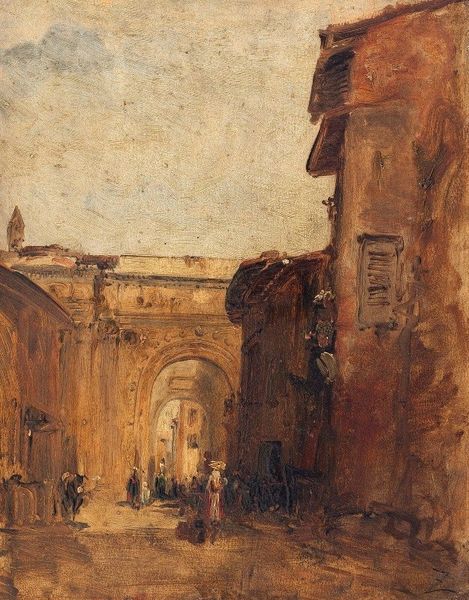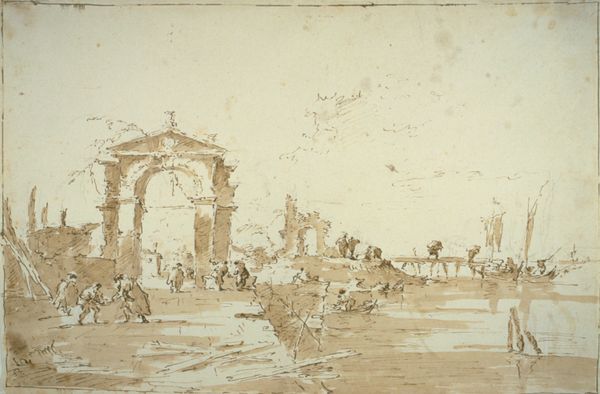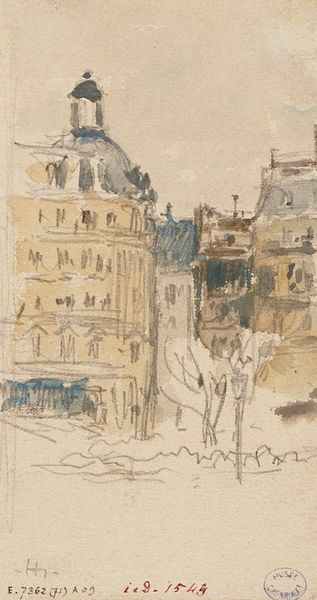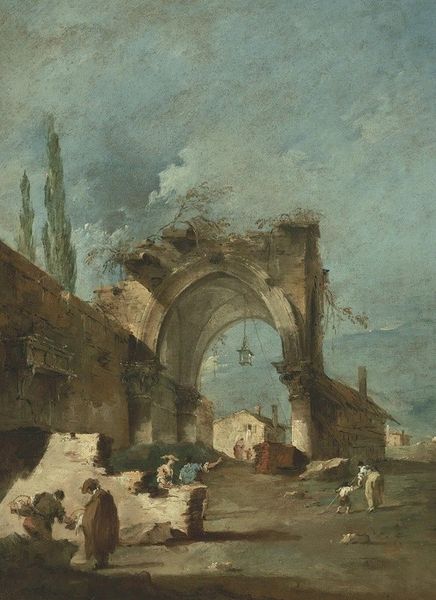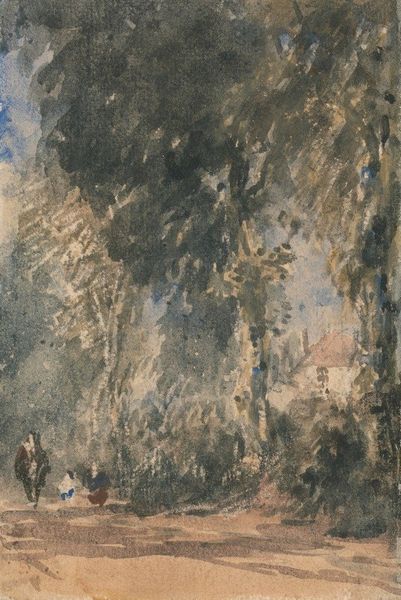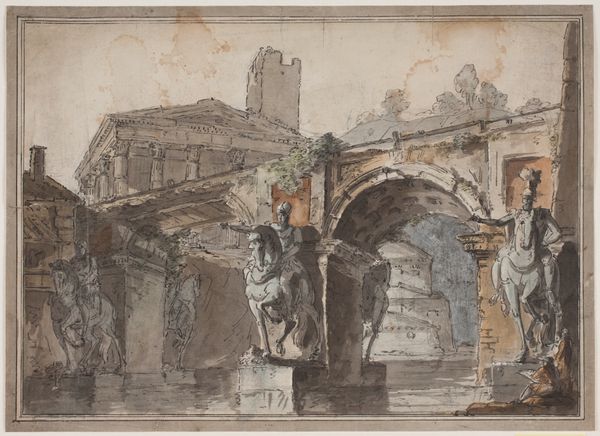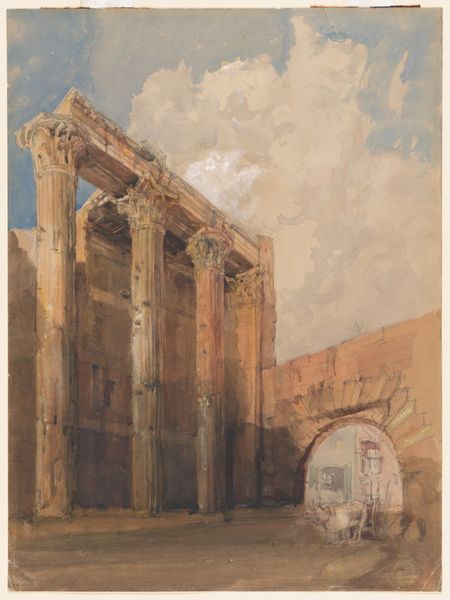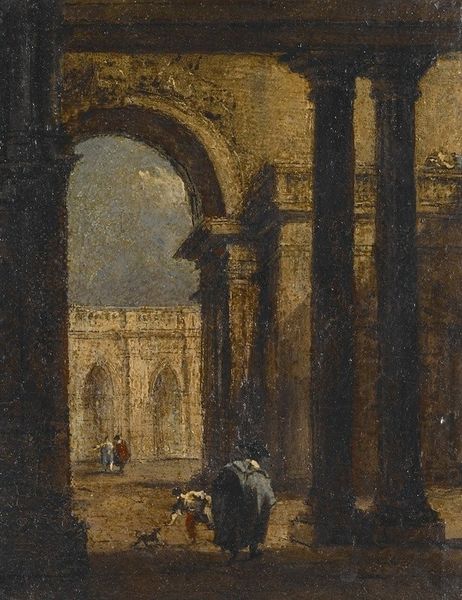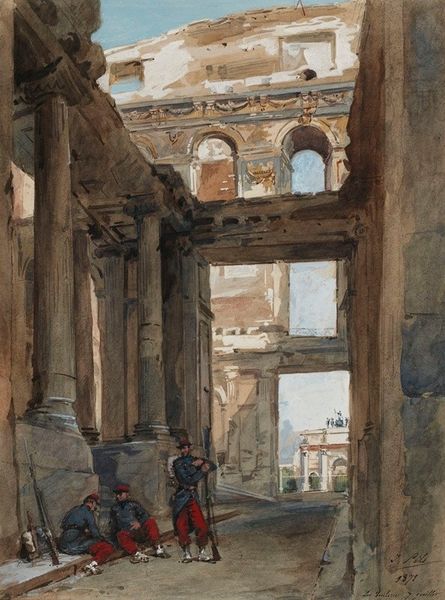
painting, watercolor, architecture
#
venetian-painting
#
painting
#
landscape
#
figuration
#
oil painting
#
watercolor
#
cityscape
#
watercolor
#
architecture
#
rococo
Copyright: Public Domain: Artvee
Editor: So, this watercolor and oil painting is called "Capriccio of Architectural Ruins and Figures," by Francesco Guardi. The crumbling architecture against that pale sky creates such a poignant, almost melancholy atmosphere. What's your read on a piece like this, particularly considering Guardi's background? Curator: Well, Guardi was working in Venice, a city built on spectacle and, by his time, arguably entering a period of decline. These "capricci," or architectural fantasies, weren’t simply about representing reality. They're intensely aware of the city's evolving image. The crumbling ruins weren’t just observed, they became potent symbols. Editor: Symbols of what exactly? The decay of Venice? Curator: Perhaps. But it's more nuanced than simple decline. Venice was still a major tourist destination. Guardi, along with others like Canaletto, were effectively constructing a brand. These weren't photographic records, but curated visions designed for consumption. Consider how these images served the Grand Tourists' desires. They yearned for the picturesque, for tangible memories, and Guardi delivered a romantic, even tragic vision, layered within the Rococo style, feeding a carefully constructed narrative. Who benefited from perpetuating this particular view? Editor: Ah, so it's about controlling the narrative, presenting a curated image of Venice, for the enjoyment—and the wallets—of wealthy tourists. It's about commodifying even the decay. Curator: Precisely. It's also worth asking: how did the rise of institutions like museums and art academies simultaneously shape and standardize notions of the 'Venetian' style and subject matter? The demand for a specific aesthetic became self-perpetuating. Editor: I never thought about it that way. It shifts my whole perspective of Venetian painting. Curator: Seeing art as inextricably linked to broader social and economic forces provides a much deeper appreciation. We see not just pretty pictures, but complex historical artifacts, loaded with political and cultural baggage.
Comments
No comments
Be the first to comment and join the conversation on the ultimate creative platform.

